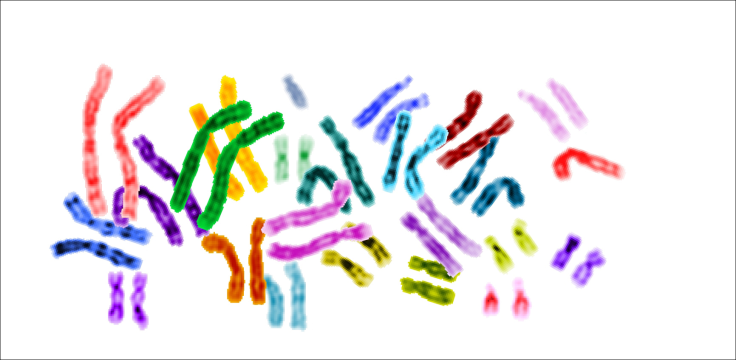'Double Life' Of Female X Chromosome Revealed: An Unexpected Role In Male Sperm Production

Long seen as "female," the double helix DNA of the X chromosome may lead a double life, researchers say.
As every woman carries two such chromosomes within every cell of the body, researchers were surprised to learn the X chromosome — as opposed to the Y, which appears only in the male — would serve any function in male fertility whatsoever. But in new analysis of the genetic sequence of the X chromosome, researchers at the Whitehead Institute reported the discovery this month along with evidence of relatively swift evolutionary change in the chromosome, challenging the previous assumption of its stability versus the more mercurial Y chromosome.
Together, the two discoveries suggest science may need to reassess such basics as the biological and medical importance of the X chromosome.
"We view this as the double life of the X chromosome," Institute director David Page told the media. "The X is the most famous, most intensely studied chromosome in all of human genetics, and the story of the X has been the story of X-linked recessive diseases, such as color blindness, hemophilia, and Duchenne's muscular dystrophy."
However, "there's another side to the X, a side that is rapidly evolving and seems to be attuned to the reproductive needs of males."
Known for groundbreaking work on the Y chromosome, the Institute has recently turned its focus to the X chromosome in mice and humans to test a longstanding theory that gene content of the chromosome is conserved and shared across mammalian species.
However, the project required researchers to upgrade knowledge repositories on the human X chromosomal sequence, which was formerly comprised of a mishmash of information from 16 or so humans. The composite was riddled with errors and gaps that failed to explain ampliconic regions, parts of the sequence that contain segments of nucleotides that are nearly identical.
To set the record straight, the Institute employed a unique sequencing method Page had developed with others at Washington University in St. Louis to investigate the Y chromosome. A decade ago, Page had reported several regions of large palindromes within the Y chromosome, areas of virtually identical genetic sequences. These mirror-like images flummoxed researchers using conventional sequencing methods.
Thus, Page and his collaborators developed the single-haplotype iterative mapping and sequencing technique to establish a definitive reference for the genetic sequence of the Y chromosome.
Using the technique, the Institute improved the published record for the human X chromosome, assembling three large amplicons and identifying previously mysterious palindromes. Utlimately, they shortened the entire length of the sequence by eliminating four major gaps in the sequencing.
With the preliminary work done, the researchers then set to leverage their new tool. As expected, they found that mouse and human X chromosomes share nearly 95 percent of their X-linked, single-copy genes, with nearly all of these genes expressed in both sexes. But more interestingly, researchers identified the differences between mice and men, including some 340 genes that mostly resided in ampliconic regions of the X — developing independently during the 80 million years since the mouse and human diverged in evolutionary history.
Further analysis showed that these genes function almost exclusively in testicular germ cells, where they may contribute to sperm production.
The observed genes have mostly eluded medical geneticists, according to Jacob Mueller, a researcher on the project. "None of the genes has been associated with a Mendellian trait," he said. "Now that we're confident of the assembly and gene content of these highly repetitive regions of the X chromosome, we can start to dissect their biological significance."
Page said a "whole other book" would be written about the mystery of X, given suspicions that these genes may play roles in reproductive infertility and even testiscular cancer.
Source: Mueller, Jacob L., Skaletsky, Helen, Brown, Laura G., Zaghlul, Sara, Rock, Susan, Graves, Tina, et al. Independent Specialization Of The Human And Mouse X Chromosomes For The Male Germline. Nature Genetics. 2013.



























